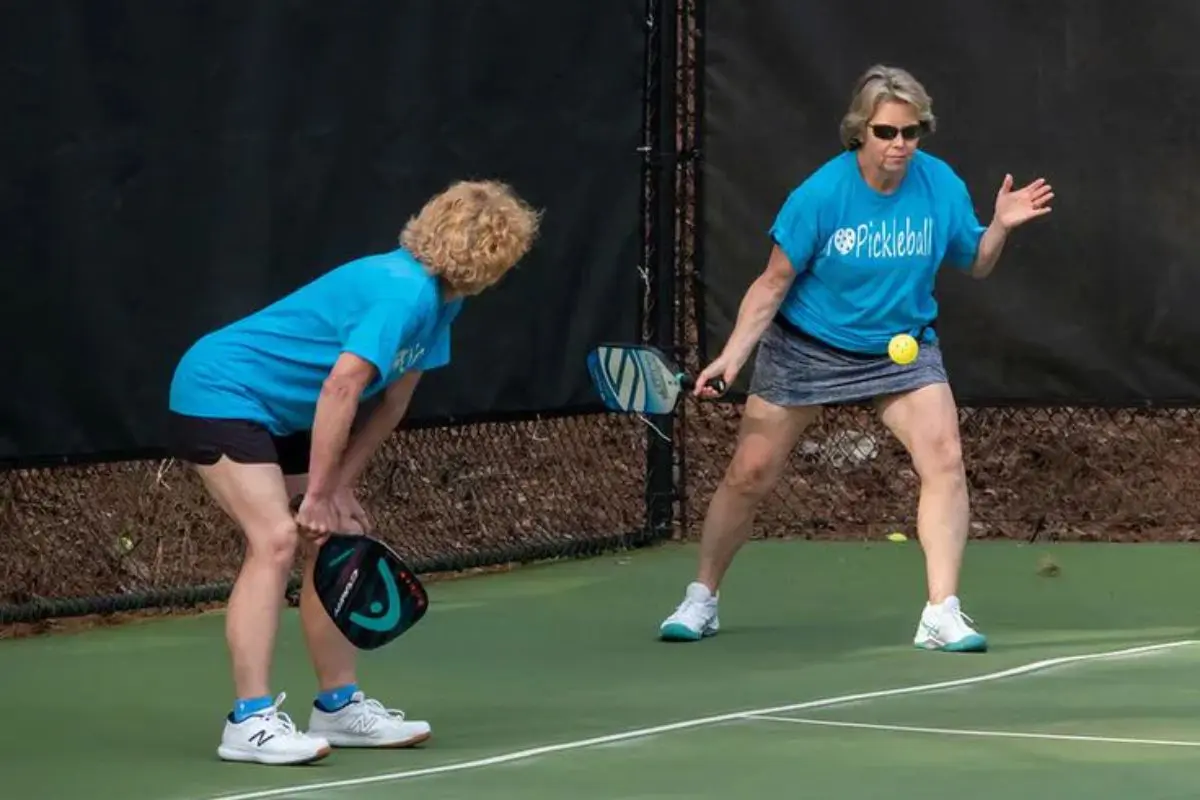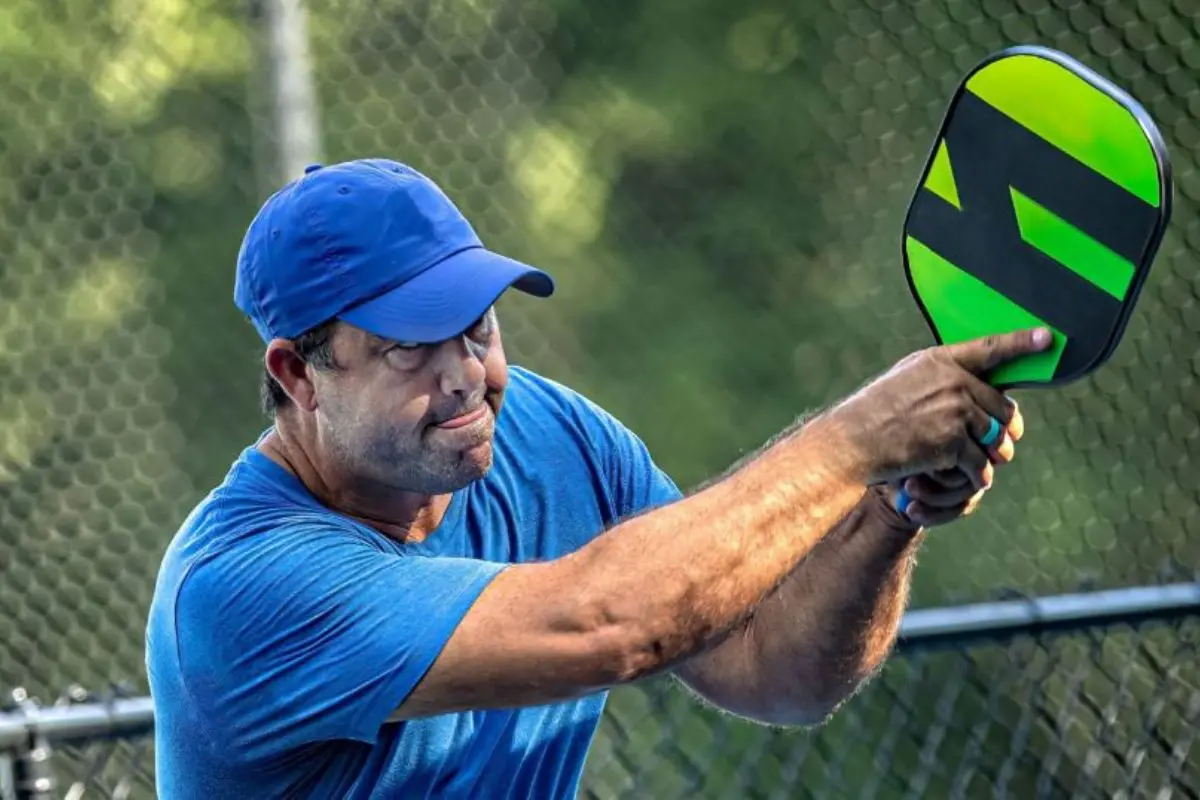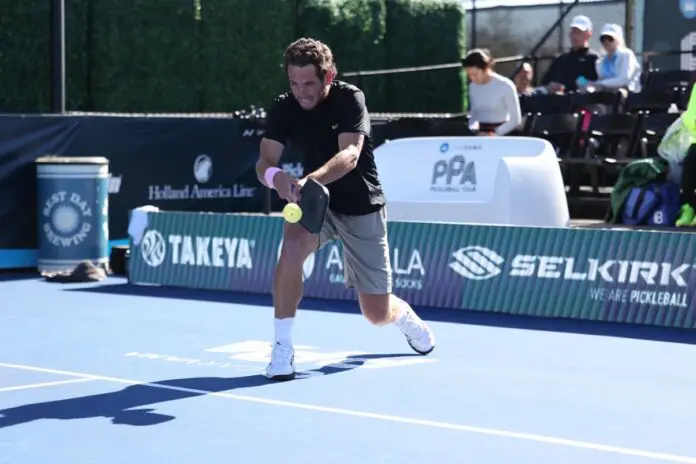Top Queuing Methods for Pickleball: Open play in pickleball, often referred to as “paddle stacking,” is a distinctive feature of the sport, where participants line up their paddles to determine the order of play. Although the concept is consistent nationwide, the methods for organizing players can vary significantly depending on local practices and the competitive environment. Here’s a look at some popular queuing and rotation methods, each with its own set of advantages and challenges.
Four On, Four Off
The Four On, Four Off method remains the most widely used and straightforward approach. In this system, a paddle rack—typically a wooden or PVC pipe with slots for paddles—serves as the queue. Players place their paddles in the rack in the order they arrive. When a court becomes available, the next four paddles in the rack move onto the court, while the previous four players exit and place their paddles at the end of the queue.
Pros:
- Simple and easy to follow.
- Requires minimal explanation, making it accessible to all players.
- Allows players to position their paddles further back if they wish to sit out a round or switch groups.
- Indicates who is next in line, ensuring transparency.
Cons:
- Doesn’t account for skill levels, potentially leading to mismatched games.
- Players may face the same opponents repeatedly, which can be either advantageous or disadvantageous.
- Risk of players moving or stealing paddles, leading to potential confusion.
- Can foster the formation of cliques, impacting the overall inclusivity of the play.

Challenge Courts
The Challenge Courts system introduces a competitive twist to open play. In this method, players compete to stay on the court, with the winners remaining and the losers returning to the queue. However, the winning players must split up for the next game, ensuring that they cannot team up again immediately. The next two players in line then become the new teammates for the winners.
Pros:
- Offers more court time for skilled players, rewarding performance.
- Enhances competitiveness and encourages higher-skilled players to participate regularly.
- Provides a structured way to ensure challenging matches and fair play.
Cons:
- May not be practical if court availability is limited, as it could lead to extended wait times.
- Matches can take longer due to the smaller number of players rotating on and off the court.
- Emphasizes winning, which can be unpredictable due to the random nature of partners.
- Requires frequent explanation, especially for newcomers or those unfamiliar with the system.
Beginner, Intermediate, and Advanced
This method categorizes players based on skill levels, aiming to create more balanced games by separating beginners, intermediates, and advanced players. Players place their paddles in designated areas corresponding to their skill level, which can be marked by racks or boxes.
Pros:
- Facilitates more evenly matched games by grouping players of similar skill levels.
- Simple to understand and implement, with potential for designated courts for each skill level.
Cons:
- Relies on players’ self-assessment, which can lead to mismatches if players overestimate their abilities.
- Can create confusion if courts are not designated for different skill levels.
- Potential for uncomfortable situations if players refuse to accurately categorize their skill level, affecting game balance.
Waterfall or Ladder
The Waterfall or Ladder system is designed for scenarios where the number of courts matches the number of players, allowing for fluid movement between courts based on performance. Winners move up to a higher court, while losers move down, ensuring that teams mix and play against new opponents regularly.
Pros:
- Promotes variety by ensuring that players are not stuck with the same teammates or opponents.
- Keeps the game flowing smoothly, with minimal downtime between matches.
- Creates a competitive environment where winning leads to playing against tougher opponents.
Cons:
- Not suitable if players are waiting to play or if the number of players is not divisible by four.
- Requires precise planning to ensure that winners and losers are correctly assigned to appropriate courts.
Each of these methods offers a unique way to organize open play in pickleball. By understanding their pros and cons, you can select the system that best suits your local play environment and preferences, ensuring a fair and enjoyable experience for all participants.

News in Brief: Top Queuing Methods for Pickleball
The article explores various queuing methods for open pickleball play, including “Four On, Four Off,” “Challenge Courts,” “Beginner, Intermediate, and Advanced,” and “Waterfall or Ladder.”
Each method offers distinct advantages and challenges, such as simplicity, competitiveness, skill-based grouping, or fluid court movement. Understanding these methods helps players choose the best system for fair and enjoyable play.
ALSO READ: APP Women’s Open Set for October: A Signature Event of APP
